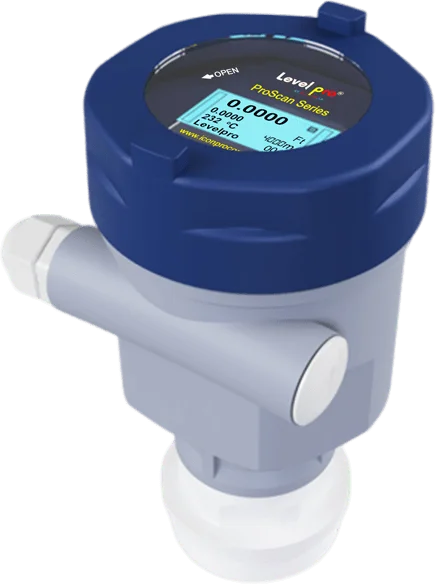The New 80G vs. 26G Radar Tank Liquid Level Sensors

Radar level sensors are used to measure the level of liquids and solids in tanks and containers. The technology has advanced over time and one of the main differences between the old 26GHz and the new 80GHz radar level sensors is the frequency of operation.
26GHz radar level sensors use a lower frequency (26GHz) compared to the new 80GHz radar level sensors. The lower frequency of the 26GHz sensors results in a longer wavelength, which allows them to penetrate through dust, vapor, and other obstructions in the tank. However, the longer wavelength also means that the signal is more susceptible to interference from other sources, such as metal or other radar signals, which can negatively impact the accuracy of the measurement.
On the other hand, 80GHz radar level sensors operate at a higher frequency (80GHz) compared to 26GHz sensors. The higher frequency results in a shorter wavelength, which reduces the signal’s ability to penetrate through dust, vapor, and other obstructions in the tank. However, the shorter wavelength also means that the signal is less susceptible to interference from other sources, which can improve the accuracy of the measurement.
Another difference between the old and new radar level sensors is the beam width. The beam width of the 26GHz radar level sensors is typically wider, which can cause measurement errors due to reflections from the sides of the tank. In contrast, the beam width of the 80GHz radar level sensors is typically narrower, which reduces the impact of reflections and improves the accuracy of the measurement.
Additionally, 80GHz radar level sensors tend to have a better resolution and are more precise in measurement, which is important for applications that require high accuracy or for measuring small or low dielectric constant materials.
In conclusion, the main difference between the old 26GHz and the new 80GHz radar level sensors is the frequency of operation. The 80GHz radar level sensors are more precise, less susceptible to interference and have a better resolution than their 26GHz counterparts. However, the 80GHz sensors are less able to penetrate through dust, vapor and other obstructions in the tank. The choice of technology will depend on the specific application and the environment in which the sensor will be used.
Learn more about level sensors
Please contact us to discuss your application


